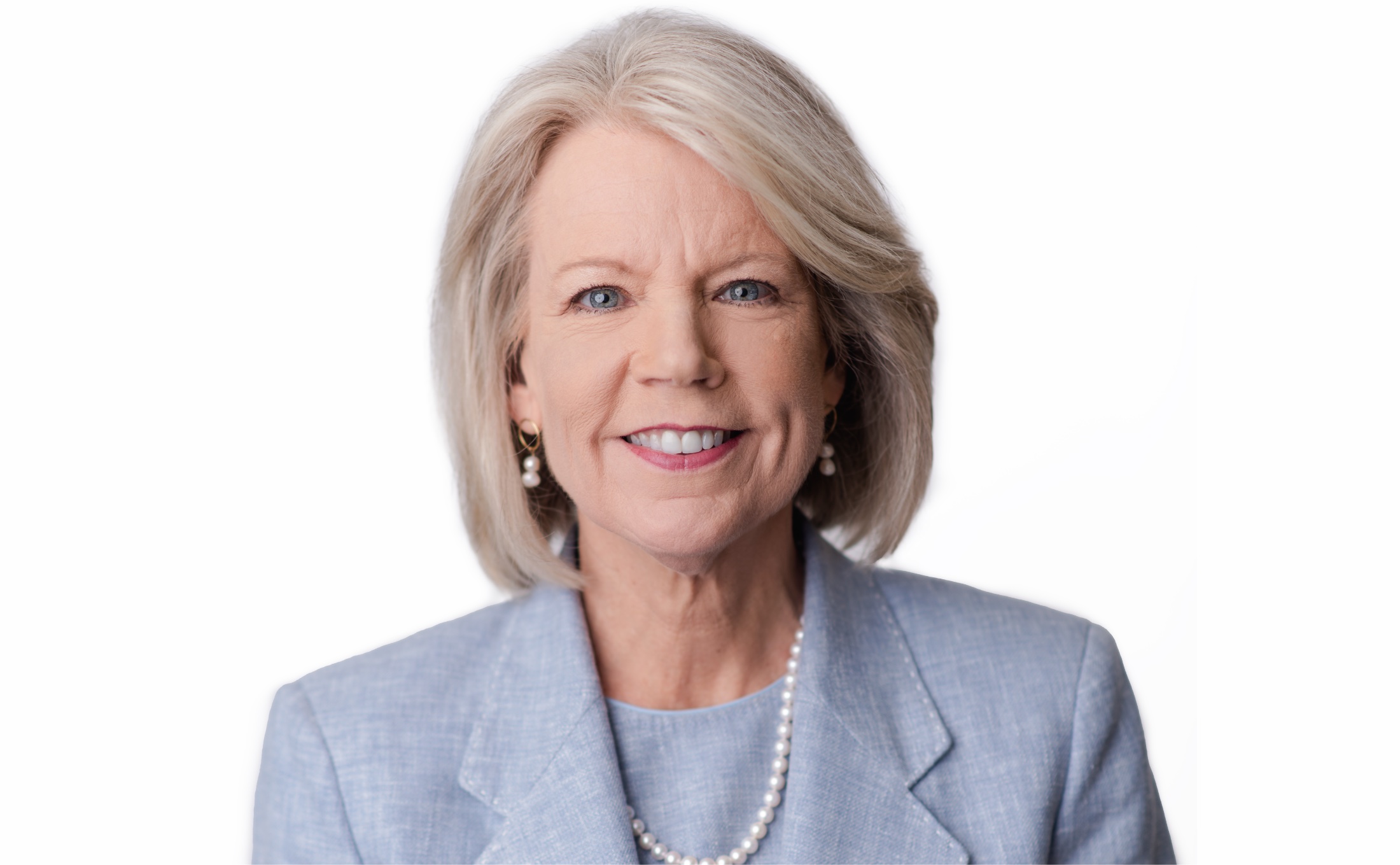TECHNOLOGY
On cloud modernisation and women in leadership

As far as tech is concerned, the workplace continues to be male-dominated. According to 2015 data from the National Center for Women & Information Technology (NCWIT), women make up 47% of all employed adults in the US, but hold only a quarter of computing roles.
Yet the benefits of greater diversity are manifold. McKinsey noted in a 2020 report, ‘Diversity Wins’, that more diverse companies have better performance, more engaged workers, and better rates of retention.
Female CEOs generally, but in tech specifically, remain thin on the ground, but not at Growth Acceleration Partners (GAP), an Americas-based strategic technology solutions provider focused on both digital transformation advisory services and software and data engineering services. Joyce Durst, CEO, began her career in an engineering role at IBM, before co-founding GAP in 2007 and focuses a lot of spare time on empowering women leaders, from Hipower, to the Women Presidents’ Organization.
CloudTech spoke with Durst about leadership, human-centric software engineering, and cloud and data modernisation:
CloudTech: Hi, Joyce. You started off as an engineer before progressing to sales roles and then eventually to forming your own company. Tell us about the potential dichotomy there – between the need to progress up the corporate ladder and the entrepreneurial mindset while maintaining that technical interest?
Joyce Durst: For me, I love the problem-solving aspect of being an engineer. More than I love just sitting in coding every day, I really love the idea of ‘Hey, we built this thing together as a team, and we got this to work.’ I get that same energy from working with the executive team to solve either people-related problems, or deciding what services we’re going to provide. So it still feels a lot like engineering.
It’s funny – people ask me all the time whether I had a lemonade stand, or always wanted to run something growing up. No, I never had any idea I actually would be a CEO of anything. I minored in management for the engineering degree. For me, the people side, of how people work together, and how you as a team can figure out how to motivate and inspire and energise others to accomplish something bigger than themselves – that was the part that really drew me to management. Because as an engineer, it can be a big problem, but I can only fix one kind of problem. In management, I can help a whole bunch of people realise their dreams, and advance themselves.
CT: Your leadership style has been described as a ‘natural servant-leader.’ Can you tell us a bit more about your leadership ethos?
JD: I think as human beings, it really is true that we get wiser as we age, and we collect all of these experiences and relationships – and you look across that and really reflect, and say, ‘How can I be the best that I can be?’ I think as a leader over the years, I certainly still have a true engineering kind of mindset and approach, but my empathetic skills, and my focus on values really takes the lead.
I think that’s what really makes the difference with GAP. We don’t have any outside investors, we don’t have a board of directors, other than me, so I can say, ‘I’m okay about putting people before profits.’ Through the whole Covid pandemic, we promised people on day one we would never lay anyone off – and if that meant we were going to take a financial hit, we were prepared to take that.
Fortunately we didn’t – the business actually grew by leaps and bounds. But when you look at it, we’re responsible for 550+ people working at Growth Acceleration Partners. Every day, I wake up and say I’m responsible for creating a great place for them to come to work, for them to share their best selves, and for them to do great things for our clients.
When I first became a CEO, I was much more concerned about ‘the numbers have to be exactly this’, or the strategy. Now I’m much more concerned about ‘are we really delighting customers every day? And are we doing the same for our employees?’ If we do those two things, everything else magically seems to work out.
CT: This is a good place to move onto GAP itself. What does GAP do, in terms of services the company provides?
JD: Growth Acceleration Partners is in the business of partnering with companies on their digital transformation journey. We do that in two different service areas. One is pure technology consulting and advisory services. Some of our clients come to us and say, ‘We don’t have any idea how to take all of our old legacy applications and get them to the cloud.’ So they’ll ask us to build that strategy and a modernisation plan, tell them how they take advantage of data, and data insights, and begin to monetise the value that they know they have in data.
The other side of our business, which is long-standing and the majority of what we do really, is on engineering services. We are experts in both software and data engineering. So people will come to us and say, ‘OK, you’ve helped us and we built this great strategy on how to modernise our applications, but we don’t have the resources of the expertise to do that. Help us build a team and work in a hybrid fashion with our existing technology organisation.’ We have teams of one to 70 or 80 people working for large U.S. companies.
Our clients primarily tend to be in one of three areas: financial services, healthcare-related technology companies, and large enterprise data analytics, technology services companies. For those companies, we really become a key part of their innovation engine, with development and testing and operations. We help companies figure out how to leverage technology to improve their business outcomes, which means better customer experiences, faster revenue, better margins and better profits.
CT: Tell us how the company is run, in terms of its core values, and the concept of ‘human-centric engineering’?
JD: If you dig into the name Growth Acceleration Partners, every word was intentionally chosen 15 years ago. We really are focused on growth: the growth of human beings, the growth of companies, and the growth of our communities.
And our values spell out ‘gap’. The first value is ‘G’ for greatness: striving for greatness in everything you do, and everywhere you do it. The ‘A’ stands for agile; be agile in your mindset, not just in terms of software development. Be open and collaborative, and be willing to have retrospectives, and change and share leadership. And then finally, the ‘P’ is because GAP invests in people. If we’re not doing all three of those things, we’re failing. I think that culture is really evident, not only to the people who work inside of GAP, but the people that work with GAP and our clients.
CT: What sort of roadblocks do your customers face, and how is GAP able to resolve them?
JD: For the customers, there’s such a limited supply of technologists around the world. And even if you can find really talented engineers, keeping really talented engineers is very, very difficult. The ‘great resignation’ has highly impacted technologists. An engineer can, in the U.S., have three or four job offers a week if they so desire.
Then, just keeping up with the skills needed to be in this fast-paced world is very difficult too. If you’re a financial services company, you may not have the budget required to retrain all of your engineers with expertise in the latest tools for cloud, or the latest frameworks and libraries. So that’s where GAP can really step in, because we have the benefit of not just working with one company, but working across 50 or 60 large companies – so we get to have our eyes on all kinds of different best practices that we can employ on every single individual customer we’re working with.
CT: You mentioned the U.S. there specifically – and this ties into another core value, that of focusing on the Americas. Can you elaborate on the rationale in that?
JD: We’re now in 18 different countries. When we started the company, someone I knew that I had worked with in a previous big company said, ‘You just have to come to Costa Rica.’ I was very busy starting a new company, but this gentleman called me literally every week for two months. And I finally said, ‘OK, I’m going to come down there and then you’ve got to stop calling me.’ And I immediately went down there, and I interviewed four people. As soon as I met these technologists, some women and some men, I was like, ‘Oh my gosh, this is where we’re supposed to be.’ Literally that day, we hired four people and started the company in Costa Rica.
GAP was way ahead of the curve on nearshoring to Latin America. They have great English skills, amazing talent, in the same time zone. All of the reports say that over the next five to 10 years, there is a significant wave of companies coming to Latin America, and that U.S. companies will want to have their development teams there. We’ll continue to expand there as quickly as we can, with our number one goal of only hiring people that match our values; hiring people that are experts in their technology field and want to grow.
CT: Going back to leadership, you are very active in supporting and mentoring women both in technology and business. Tell us about some of the things you do, and how the space has evolved in your career?
JD: We have a lot of work to do still as an industry, sadly. The number of women running tech companies has not changed dramatically. I think that’s on the industry — that’s on us, to make sure we’re doing everything to make the environment safer and more comfortable and more appealing for women. At GAP, 60% of our executive team is female, 60% of my engineering leadership team is female, and no-one questions whether or not a woman should be leading engineering.
So that’s part of what more companies need to do. On the mentoring side, we are also very passionate and involved. We have a number of charitable initiatives that are focused on getting girls in junior high and high school involved in STEM activities. We sponsor boot camps and have hackathons. You’ve got to start early.
Also, in my role as CEO, I mentor a number of women CEOs, in tech companies and non-tech companies. I’m also on the board of directors for the Austin Chamber of Commerce, and I’m the chair of the global tech and innovation committee. All of these initiatives are aligned with the idea of ‘hey, we’ve got to get more women into leadership positions in all kinds of companies’, because every company is a technology company. They just may not know it yet.
CT: If you were to give one piece of advice to a young woman reading this article who wants to get into STEM, what would it be?
JD: I would say really open your mind to the possibilities of how you can use these skills to change the world. The fashion industry, for example, is now run by technology. The food industry is now run by technology… the travel industry. Any industry you’re interested in, behind the scenes, it is run by technology.
And if you have a technology background, I promise that you will have a very rewarding career for your entire life. You will never have to worry about there not being a job for you – there always will be an opportunity for you to work and make an impact.
For more information about Joyce and Growth Acceleration Partners, please visit www.wearegap.com.
Source link



















You must be logged in to post a comment Login